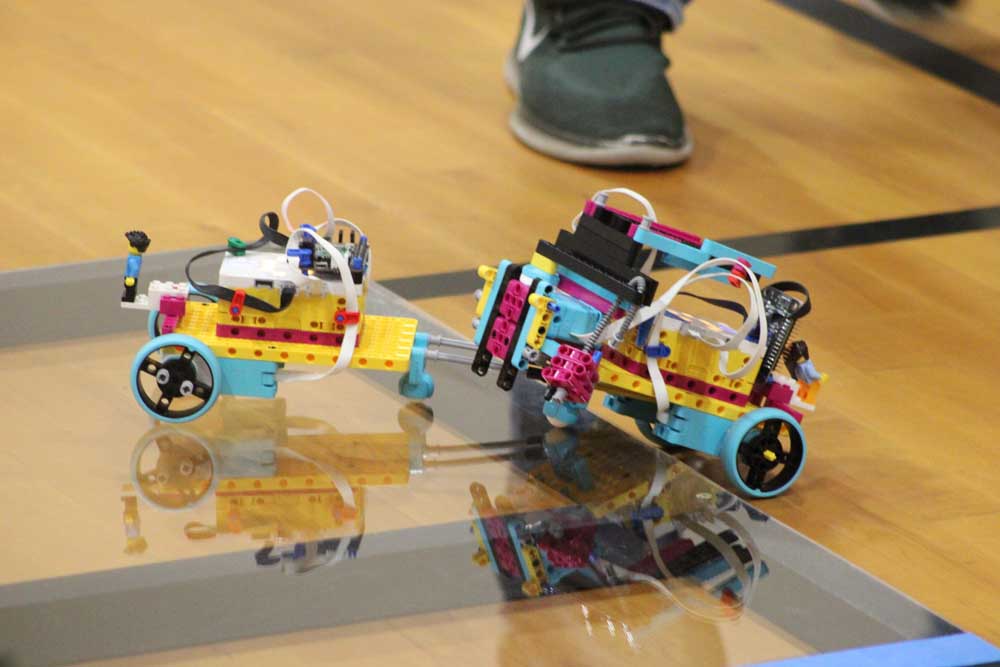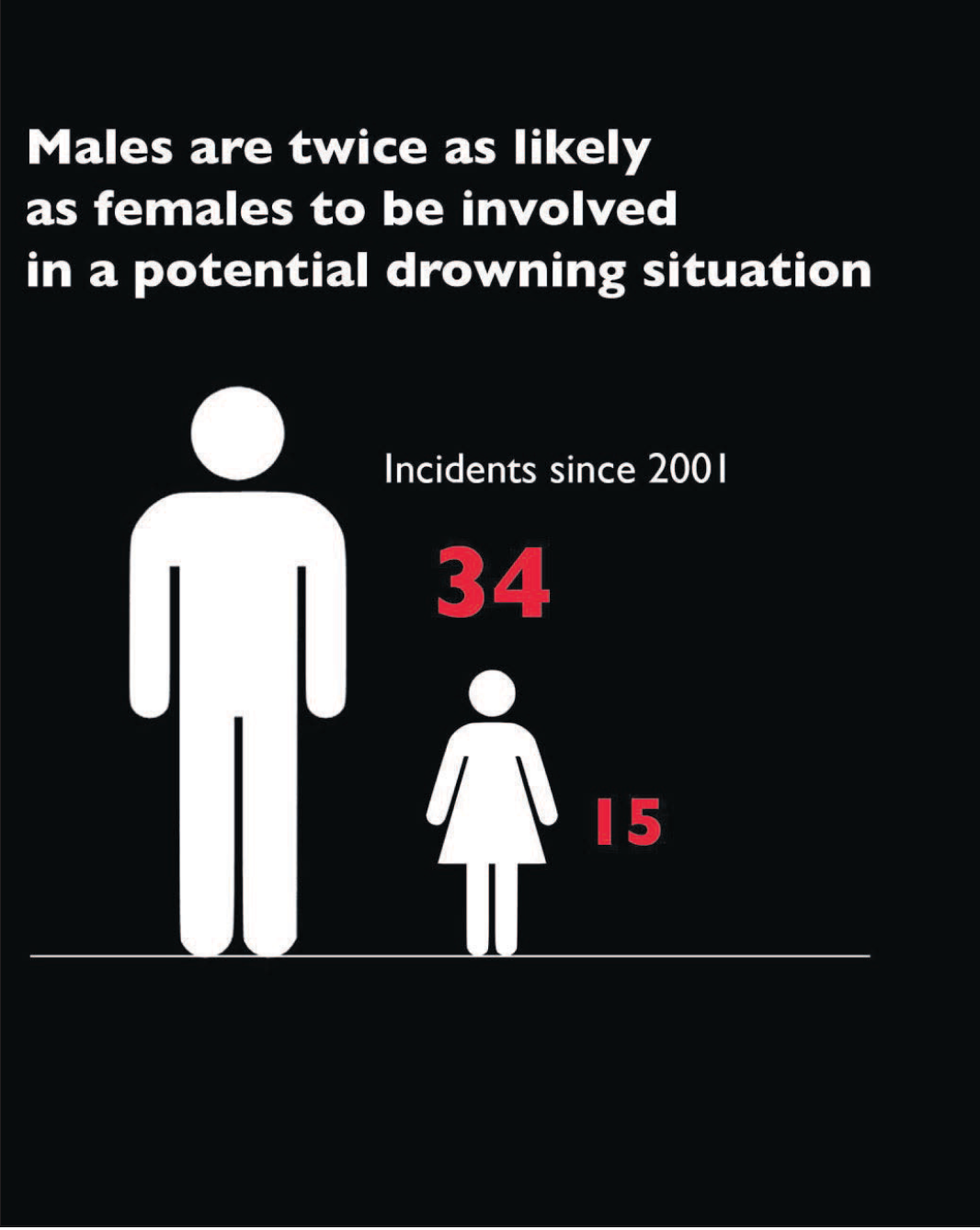Nonprofits partner for free summer robotics camp
Published 2:58 pm Monday, June 24, 2024

- The robot “Houdini” pushes the robot “Ashlynn” off the arena in the first round of the LEGO BattleBots tournament at Ocean Park Elementary last Friday as part of the summer robotics camp for grades 3-5.
OCEAN PARK — School may be out for summer, but some of the peninsula’s youngest students were back in the classroom last week to dip their toes into the world of STEM and robotics thanks to a partnership between a pair of nonprofits.
Pacific STEM Robotics and the Dylan Jude Harrell Community Center (DJHCC) have linked up this summer to offer three weekly summer camps for local children grades 3-12 at no cost. Two dozen students in grades 3-5 gathered at Ocean Park Elementary last week, where they got to dabble with computer programming and engineering that culminated on Friday afternoon with robotics tournaments that gave students the chance to show off their skills.
‘The ways I saw many of these students lift and support each other when things got difficult was humbling and inspiring.’
Donald Anderson,
robotics teacher
A middle school camp is being held this week for grades 6-8 at OPE, and a high school camp for grades 9-12 will be held July 8-11 at Ilwaco High School. Each day runs from 8:30 a.m. to 3:30 p.m. and includes six hours of instruction.
A few spots remain for next month’s high school camp, which teaches real coding language to challenge both beginners and experienced programmers. Interested students and families can register at djhcc.campbrainregistration.com.
Offering new opportunities
Supported by the Pacific Community Foundation, Pacific STEM Robotics was started by peninsula math, science and robotics teacher Donald Anderson, who serves as the camp coordinator and lead instructor. Anderson has spent the past couple of years teaching overseas for the U.S. Department of Defense, but is back this summer to help put on the camps.
Anderson credits Bhaskar Athmanathan, a local programmer and parent, for playing a pivotal role in making the club a success for both their students and volunteer coaches, which includes educators and STEM professionals providing “invaluable” instructional support to students.
Pacific STEM Robotics’ instructional team works throughout the year to develop the curricula and hardware for the camps, Anderson said, and the club has collaborated with the Ocean Beach School District to access key materials and software to make the learning possible. The club is also responsible for the necessary software, arena for the robots and replacement costs.
“The club started because OBSD students are brilliant and deserve learning opportunities often reserved for large technology hubs and private learning institutions,” said Anderson, who added that there are similar camps held in the Seattle area that run for three hours each day and charge $500 per student. “Several people encouraged me to start this nonprofit to ensure we could continue to lift our local learners through robotics and STEM learning for many years to come.”
By partnering with DJHCC, which registers and hosts the students, participants of the weekly camps also receive free meals and transportation. Local businesses and community members have contributed over $19,000 to date to help ensure the camp is available free of charge for students, and 38 of the 90 students signed up across the three camps have been sponsored so far.
Those interested in sponsoring students attending the summer camps can visit pacificstemrobotics.org to learn more.
A quieter approach
Introducing students to computer programming, or coding, made up a large chunk of last week’s elementary school camp, Anderson said. “Most students went from having no programming experience to using block-based coding to move robots autonomously around obstacles.”
The engineering portion of the camp involved students being challenged to build their “dream school” through Minecraft by using the education edition of the popular game. In teams of two, students used the game’s block-based construction elements to design and build their schools, which they presented to an audience of almost 50 people who rated their school and gave feedback.
The most exciting engineering work that the students took part in was constructing their own LEGO BattleBots that were custom-coded to work with XBox controllers — students even got to design their own logo for their robots through Canva, an Adobe-like web tool. The students, in teams of two, squared off against their classmates in a “jousting” tournament Friday afternoon and were tasked with knocking the opposing BattleBots off of a glass platform in a best-of-three format.
For Anderson, the benefits of introducing elementary school students to STEM and robotics were obvious.
“Our students are exposed to technology constantly, but that doesn’t mean that they are gaining technical skills,” he said. “It would surprise you how many students enter my classroom who don’t know how to visit a specific website or send an email. We have a generation of app users, but not necessarily strong programmers, engineers or problem solvers.”
In addition to gaining STEM skills at a young age, Anderson said robotics challenges the students to work through difficult situations by collaborating with and competing against other people. Some of the biggest growth he saw in students last week was in “soft skills,” such as how they worked with their classmates, communicated with adults and regulated their emotions during the competition.
In contrast to teaching STEM skills with the middle and high school students he typically instructs, Anderson said a more systematic and quieter approach is necessary for the elementary grade levels.
“The younger grades approach learning so sincerely, but can become easily discouraged,” he said. “The ways I saw many of these students lift and support each other when things got difficult was humbling and inspiring. One-on-one support was necessary throughout the camp and luckily we had a staff and volunteers that were able to give individual attention to each student.”





